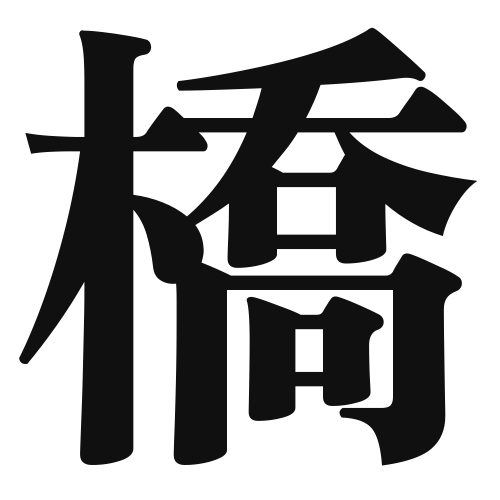1. Overview of Meaning
The kanji “橋” (hashi) means “bridge.” It represents a structure that connects two points, allowing people and vehicles to cross over obstacles like rivers or valleys.
2. Formation and Radicals
The kanji “橋” is a compound character, formed by combining two elements: the radical “木” (tree) and the phonetic component “橋” (hashi). The tree represents the material used to build bridges, while the phonetic part indicates the pronunciation.
The radical “木” is commonly associated with trees and wood, which are essential materials in traditional bridge construction.
3. Examples of Usage
Common words and phrases that include “橋” are:
- 鉄橋 (てっきょう, tekkyou) – iron bridge
- 歩道橋 (ほどうきょう, hodoukyou) – pedestrian bridge
- 吊り橋 (つりばし, tsuribashi) – suspension bridge
Example sentences in daily conversation:
- 「あの橋を渡ると、駅に着きます。」(That bridge will take you to the station.)
- 「新しい橋が建設中です。」(A new bridge is under construction.)
4. Synonyms and Antonyms
Similar kanji with related meanings include:
- 道 (みち, michi) – road, which refers to a pathway for travel but does not imply crossing over obstacles.
- トンネル (tonneru) – tunnel, which is an underground passage, contrasting with a bridge that is above ground.
Antonyms include:
- 崖 (がけ, gake) – cliff, which represents a steep, vertical rock face, the opposite of a bridge that connects two points.
5. Cultural and Historical Background
The concept of bridges holds significant importance in Japanese culture, symbolizing connection and unity. Many famous bridges in Japan, such as the Kintai-kyo, are celebrated for their beauty and historical significance.
Proverbs and idioms related to bridges include:
- 「橋を架ける」(hashi o kakeru) – to build a bridge, meaning to create a connection or reconciliation between people.
Bridges are also featured in various traditional stories and artworks, emphasizing their role in connecting different worlds or ideas.
